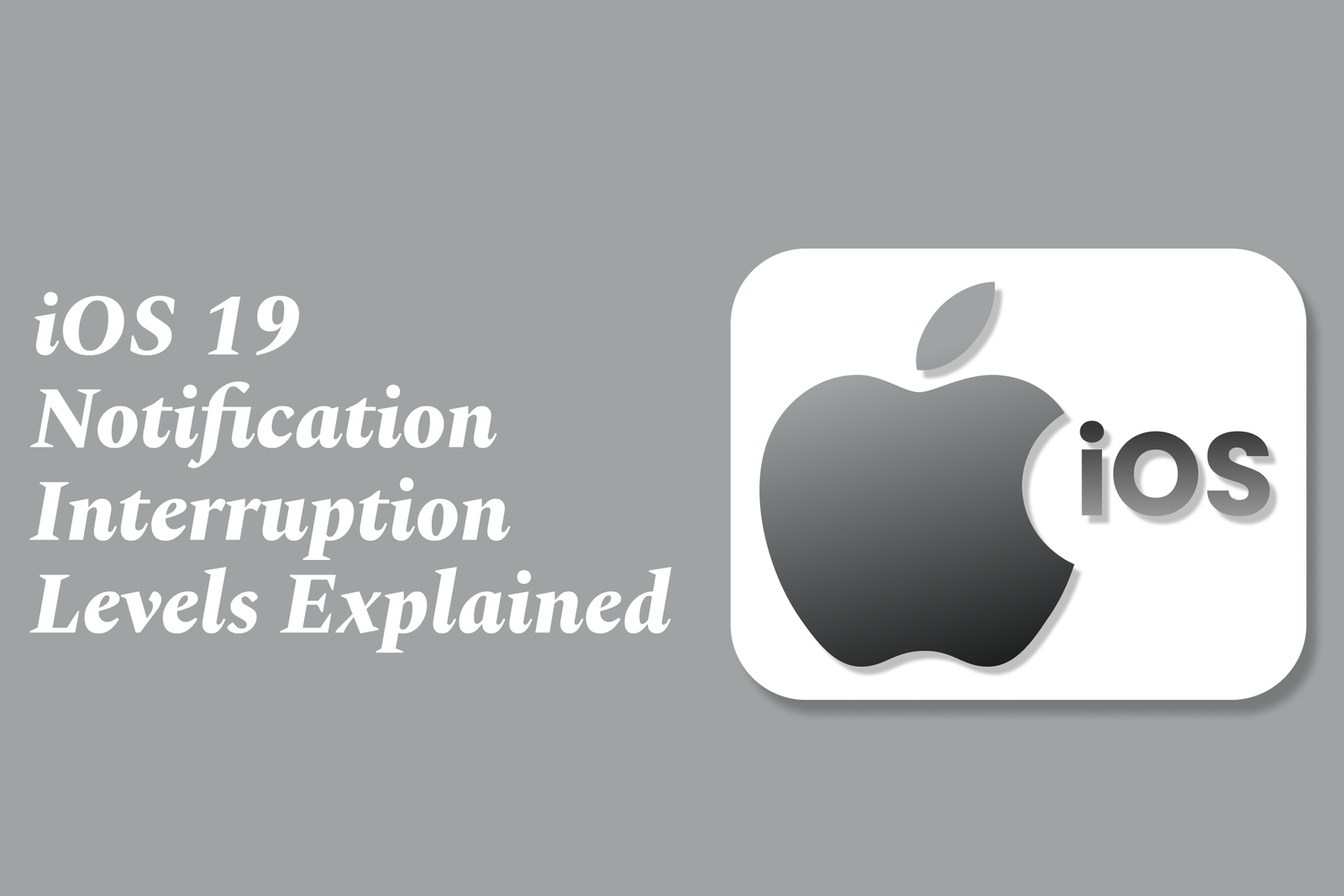iOS 19 notification interruption levels explained
iOS 19 introduces Notification Interruption Levels, a system that categorizes alerts by urgency—Passive, Active, Time-sensitive, and Critical—helping users manage notifications more effectively by controlling how and when notifications interrupt their focus.
iOS 19 Notification Interruption Levels Explained
This article explains the new notification interruption levels introduced in iOS 19, detailing how users and developers can manage notifications for a better user experience.
1 ) Overview of Notification Interruption Levels
iOS 19 refines how notifications are delivered by introducing distinct interruption levels.
These levels help determine the urgency and presentation style of notifications.
Users can customize how notifications appear based on their importance.
2 ) Types of Interruption Levels
Passive: Notifications appear quietly without sound or banner. Ideal for non urgent information.
Active: Notifications generate a sound and banner to alert users immediately.
Time sensitive: Critical notifications that demand immediate attention and can override Focus modes.
Critical: Reserved for extremely important alerts such as health or safety related notifications; these bypass all user settings, including Do Not Disturb.
3 ) Benefits of Interruption Levels
Provide a smoother notification experience by preventing unnecessary disruptions.
Allow apps to classify notifications so that only essential alerts interrupt the user.
Enhance Focus modes by allowing selective notification delivery based on urgency.
4 ) Developer Implementation
Developers need to specify interruption levels when scheduling notifications.
Proper categorization ensures notifications behave according to their designated priority.
iOS 19 offers APIs to support these interruption levels seamlessly.
5 ) User Customization
Users can adjust notification settings per app, tuning alert styles and sounds per interruption level.
Interruption levels integrate with Focus and Do Not Disturb settings for flexible control.
Summary:
iOS 19's Notification Interruption Levels introduce a granular system for managing the urgency and presentation of notifications. This helps users avoid unnecessary distractions while ensuring critical alerts receive immediate attention. Developers are encouraged to utilize these levels to enhance app notifications, and users gain more control over their notification experience.
https://justacademy.in/news-detail/android-app-developer-conference-highlights
https://justacademy.in/news-detail/react-native?s-new-live-reload-vs-fast-refresh-showdown
https://justacademy.in/news-detail/react-native?s-secret-weapon:-faster-app-load-times
https://justacademy.in/news-detail/android-enterprise-management-features
https://justacademy.in/news-detail/top-android-smartphones-launched-in-2025
Related Posts
In 2025, top Angular libraries offer modern, feature-rich components and tools for building dynamic web apps. From powerful data grids to low-code platforms like UI Bakery, these libraries enhance development speed, UI design, and scalability, making them essential for Angular developers.
Migrating from AngularJS to Angular 17 involves gradually upgrading your app by running both frameworks together using tools like ngUpgrade, rewriting components in TypeScript, and adopting Angular’s modern architecture to enhance performance, maintainability, and long-term support.
Angular state management tools help organize and handle app data efficiently, improving scalability and maintainability. Popular options include NgRx for robust, RxJS-based patterns, and newer Signal Store solutions that offer simpler, reactive approaches integrated tightly with Angular’s latest features.
RxJS in Angular empowers developers to manage asynchronous data streams with powerful operators like `forkJoin`, `combineLatest`, and `zip`. Mastering these key operators in 2025 is essential for building efficient, reactive applications that handle complex event sequences seamlessly.
Angular performance optimization in 2025 focuses on improving app speed and responsiveness by using techniques like OnPush change detection, lazy loading, efficient data caching, and AOT compilation. These practices reduce load times, enhance user experience, and ensure scalable, fast Angular applications.
In 2025, Angular remains preferred for large-scale, enterprise apps with its robust, all-in-one framework, while Vue attracts developers seeking simplicity and fast development for smaller projects. Both frameworks excel, with choice driven by project needs and team expertise.
Angular Signals are a new reactive primitive in Angular 16 that enable fine-grained, efficient change detection by automatically tracking dependencies and updating only affected parts of the UI. They simplify state management and boost app performance, revolutionizing Angular's reactivity model.
Angular interview questions to prepare in 2025 focus on core concepts like components, directives, data binding, routing, and dependency injection, along with TypeScript mastery and latest Angular features to ensure strong practical knowledge for building scalable, efficient web applications.
AngularJS reached its official end of support in January 2022, meaning no further updates or security patches. To ensure app security and performance, developers should consider migrating to modern Angular versions or seek third-party long-term support options if immediate migration isn’t possible.
The Angular Roadmap 2025 highlights upcoming features focused on improving developer experience and performance, including zoneless Angular, Signals integration, enhanced Forms, async data handling, improved HMR, and expanded Angular Material/CDK enhancements, driving modern, efficient web app development.










